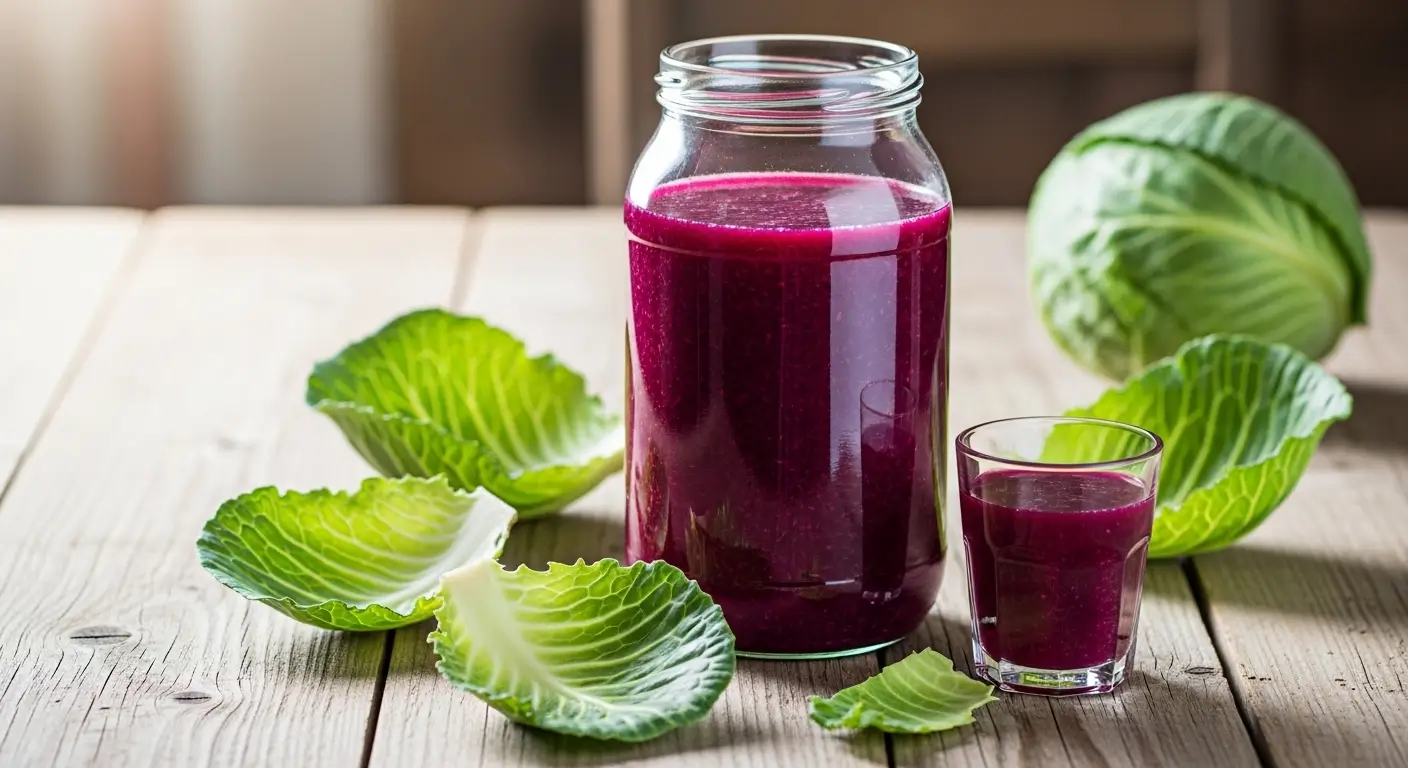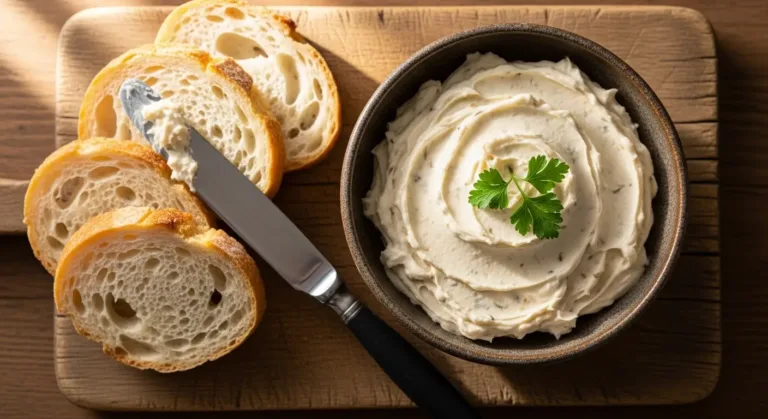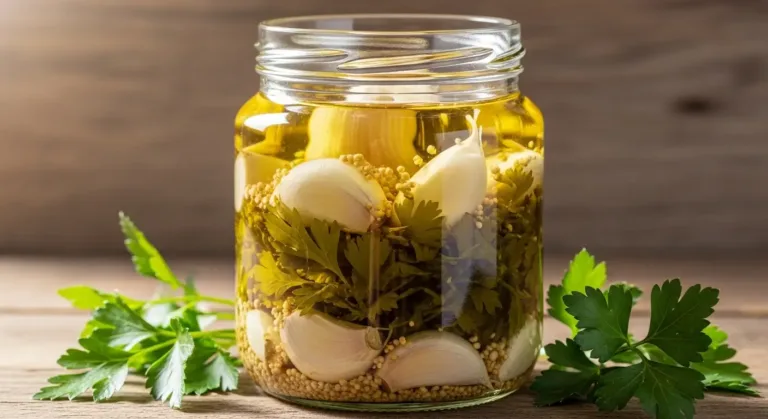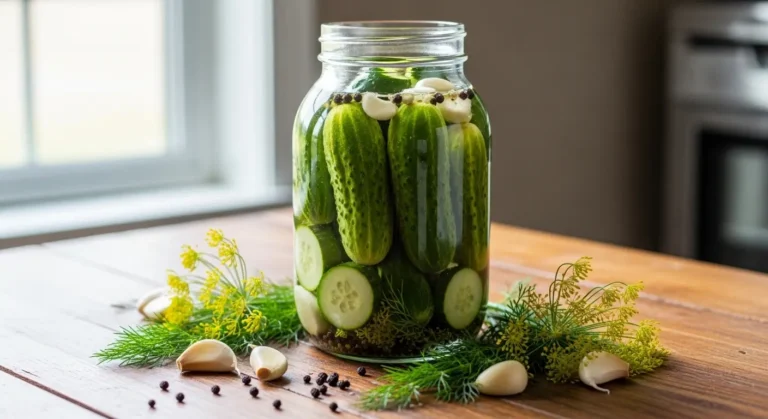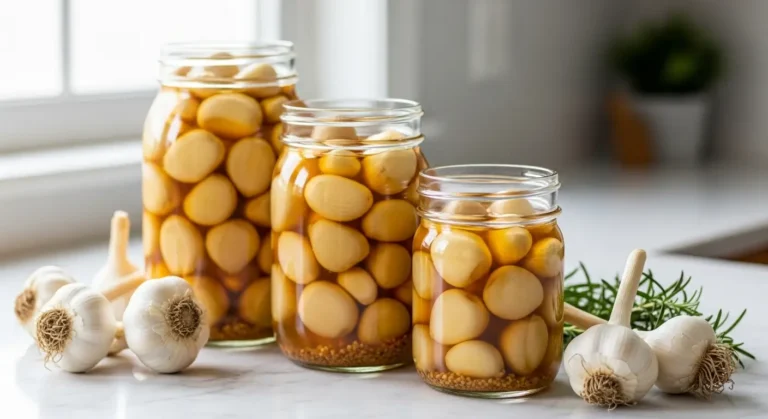Used to pour sauerkraut juice straight down the sink. Thought it was just leftover brine, nothing special. Turns out I was dumping liquid gold. That tangy stuff packs probiotics and nutrients, and storing sauerkraut juice is dead simple once you know what you’re doing.
So What Even Is Sauerkraut Juice?
Not Just Random Jar Liquid
Sauerkraut juice forms during fermentation. It’s not packing liquid or added water. The same bacteria that make sauerkraut healthy live in that juice. You’re basically getting concentrated gut-friendly bacteria.
How Fermentation Creates the Juice
Bacteria convert sugars into lactic acid during fermentation. Lactobacillus does most of the work. Salt pulls moisture from the cabbage, creating sauerkraut juice. Takes about three to four weeks at room temperature (70-75°F). Pretty straightforward process.
Discover great ideas likes: 7 Creative Kimchi Variations to Spice Up Your Meals
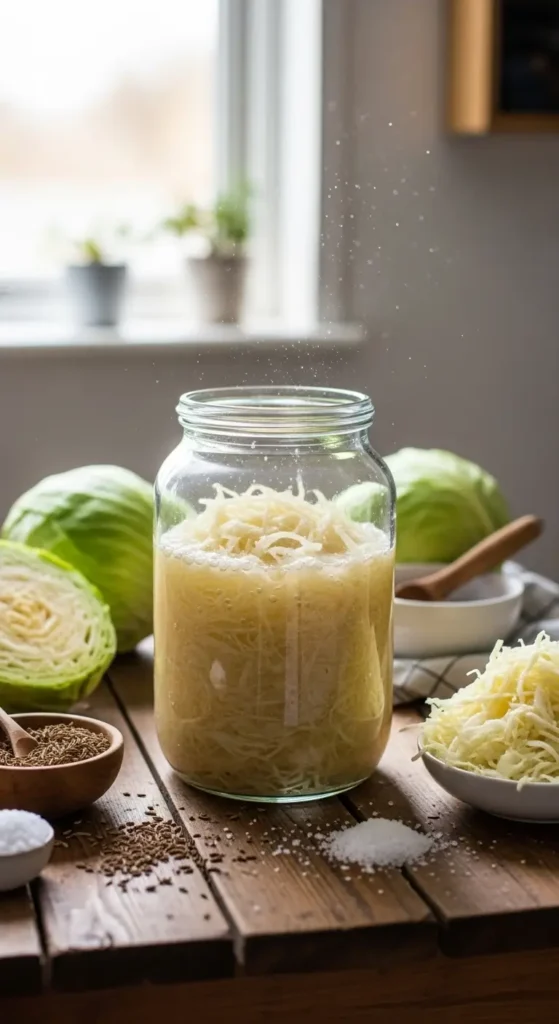
Storing Sauerkraut Juice the Right Way
Refrigeration Works Best
Keep sauerkraut juice in the fridge at 35-40°F. The cold puts probiotics in a dormant state without killing them. Lasts 4-6 months stored properly. When you drink the juice, bacteria activate again in your gut.
Container Choice Matters
Glass beats plastic every time. Plastic absorbs odors and leaches chemicals into acidic liquids. Mason jars work perfectly for storing sauerkraut juice. Clean everything before transferring. Use clean spoons—no double dipping. Air causes mold growth, so seal that lid tight.
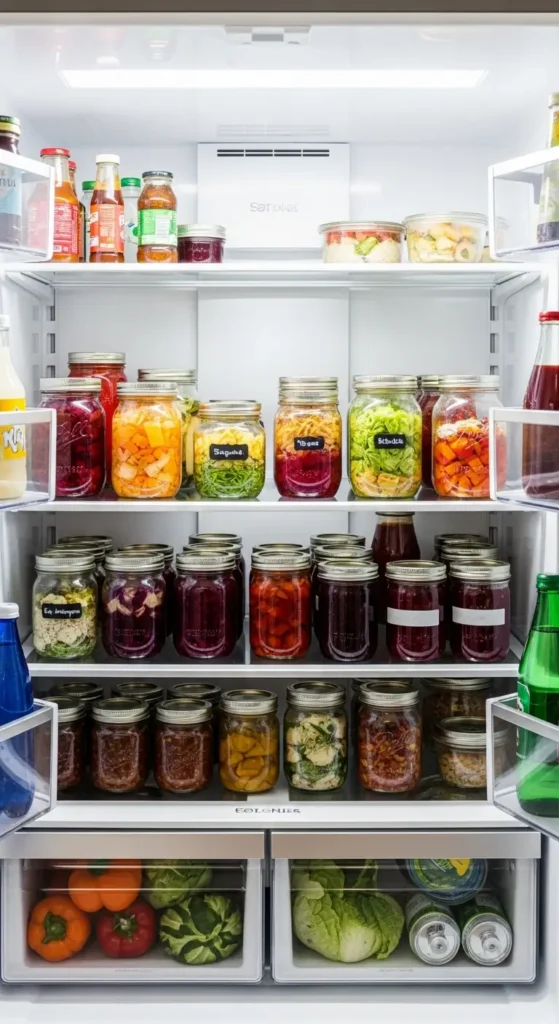
Health Benefits of Sauerkraut Juice
Probiotics for Your Gut
We’re talking about up to 28 bacterial strains in one jar. These support digestion and boost immune function. An ounce or two of sauerkraut juice delivers millions of live cultures. Way cheaper than supplement capsules.
More Than Just Bacteria
Fermentation increases nutrient availability compared to raw cabbage. You get vitamin C, vitamin K, and B vitamins, including B12 (rare in plant foods), plus potassium and magnesium. The process upgrades cabbage nutritionally.
Don’t miss our: How to Make Probiotic Pickles in Under 5 Days
Ways to Use Sauerkraut Juice
Drinking It Straight
Morning shot approach. Start with 1-2 ounces daily. Tastes intense, won’t sugarcoat that. Some folks chill sauerkraut juice first or dilute it with water. It takes time to adjust to the flavor.
In Salad Dressings
Swap vinegar for sauerkraut juice in dressings. Use 1-2 tablespoons per serving. Adds tang plus probiotics. Works great in marinades too—acidity tenderizes meat and adds depth. High heat kills probiotics, though. Flavor survives cooking, but bacteria don’t.
Adding to Soups and Smoothies
Cold soups get 2-3 tablespoons to preserve probiotics. Hot soups? Stir in sauerkraut juice after cooking. Smoothies work with 1-2 tablespoons, especially veggie blends. The flavor integrates better than expected.
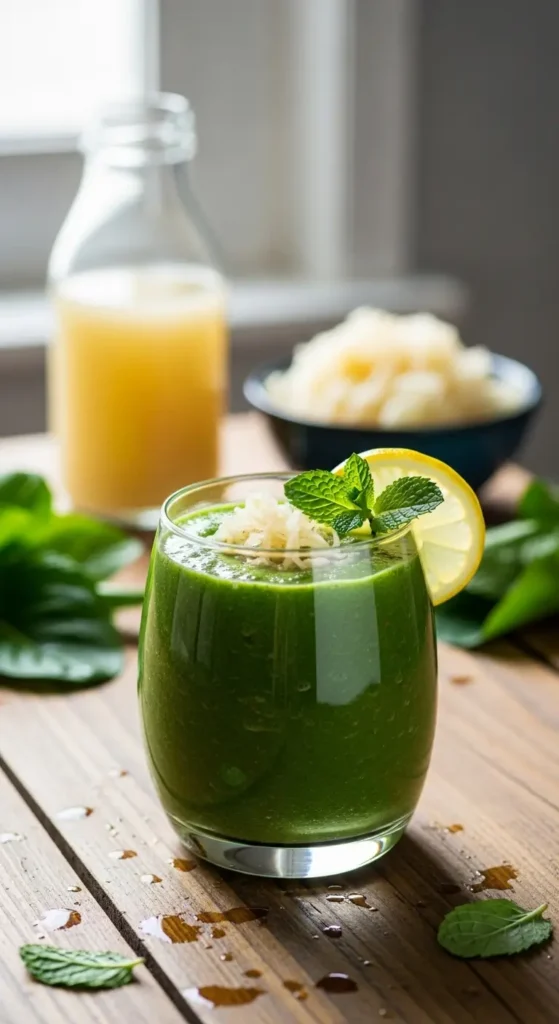
Temperature Stuff You Should Know
Best Storage Temps
Long-term storage needs 35-40°F to maintain live probiotics. Room temperature (70-75°F) reactivates bacteria if you’re using it as a fermentation starter. Above 80°F and it spoils fast. Temperature matters more than people think.
What Else Affects Quality?
Light degrades vitamins. Store in dark spaces or just keep it in the fridge. Air exposure causes the most problems—mold and yeast grow on the surface. Keep containers sealed.
Looking for inspiration? Try Fermented Cabbage Blends
Telling Good from Bad
What Healthy Juice Looks Like
Should smell sour, maybe slightly sulfurous. That sulfur note is normal for fermented cabbage. Cloudiness is fine; murkiness isn’t. A rancid smell, visible mold, or slimy texture means toss it. The acidity (pH below 4.0) prevents harmful bacteria naturally.
Playing It Safe
Clean utensils always. Never reuse a spoon without washing. Making your own fermented vegetables? Use 2-2.5% salt for safety. Something seems off? Throw it out. Simple rule.
Making It Last Longer
Freezing as an Option
Freezing works for 6-12 months but kills most probiotics. Fine for cooking applications where you want flavor, not live cultures. Taste and some nutrients survive freezing. Ice cube trays make portioning easy.
Long-Term Storage Tips
Consistent refrigeration plus minimal air exposure. Some people keep it a full year. Check regularly for changes in appearance, smell, or taste. Quality drops over time even when stored correctly.
Other Uses You Might Try
Non-Kitchen Applications
Folk remedy for canker sores. Natural cleaner for mineral deposits (careful on delicate surfaces). Works as a deodorizer due to antimicrobial properties. Drinking gives you the most benefit, though.
For Your Pets
Might help pet digestion in small amounts. Start with 1 teaspoon mixed in food. Watch their reaction. Always check with your vet first, especially if health issues exist.
FAQs
Conclusion
Sauerkraut juice ranks as one of the simplest gut-health additions. Store sauerkraut juice in the fridge using glass jars and clean utensils. Lasts months. Drink straight, mix into dressings, or add to smoothies.
Probiotics, vitamins, and minerals in sauerkraut juice justify keeping a jar around. Start small, try different applications, and observe your body’s response. The taste becomes familiar over time. That tangy liquid offers more than most people realize.
PrintStop Tossing That Sauerkraut Juice Down the Drain
- Total Time: 5 minutes
- Yield: Varies (depends on sauerkraut batch)
- Diet: Vegan
Description
Used to pour sauerkraut juice down the sink? Big mistake. That tangy liquid is packed with probiotics, vitamins, and minerals—and storing it right keeps it fresh for months.
Ingredients
- Fresh sauerkraut with active fermentation
- Clean glass jars with tight lids
- Refrigerator (35–40°F / 2–4°C)
- Clean spoons or utensils
- Optional: Ice cube trays for freezing
Instructions
- Transfer sauerkraut juice into clean glass jars once fermentation is done (about 3–4 weeks at room temperature).
- Seal jars tightly and store in the refrigerator at 35–40°F.
- Use clean utensils each time to avoid contamination.
- Consume within 4–6 months for best quality.
- If desired, freeze portions in ice cube trays for cooking use (probiotics won’t survive freezing).
- Check regularly for signs of spoilage—off smell, mold, or slimy texture means discard.
Notes
Sauerkraut juice is probiotic-rich and nutrient-dense. Drink 1–2 ounces daily, mix into dressings, or stir into smoothies after cooking for gut health and flavor. Always store in glass, never plastic.
- Prep Time: 5 minutes
- Cook Time: 0 minutes
- Category: Fermentation & Storage
- Method: Cold Storage
- Cuisine: Fermented Foods
Nutrition
- Serving Size: 1 ounce
- Calories: 5
- Sugar: 0g
- Sodium: 200mg
- Fat: 0g
- Saturated Fat: 0g
- Unsaturated Fat: 0g
- Trans Fat: 0g
- Carbohydrates: 1g
- Fiber: 0g
- Protein: 0g
- Cholesterol: 0mg
Keywords: sauerkraut juice, probiotics, gut health, fermentation, storage tips

